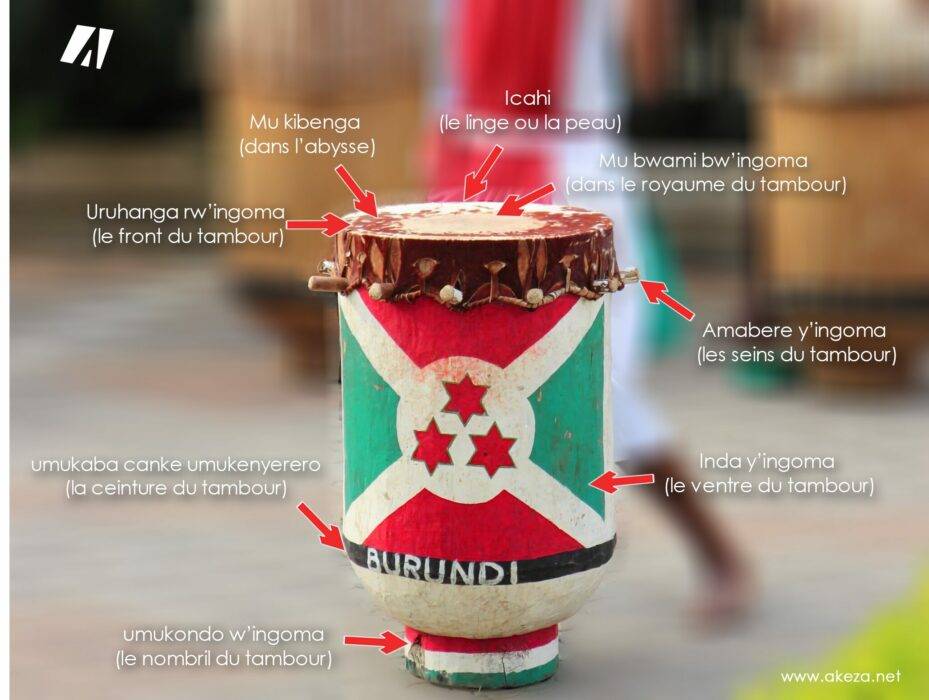In Burundi, the drum - called ingoma in Kirundi - occupies a central place in the country's culture and history. Much more than a simple musical instrument, it represents a living memory, a vector of national identity and a sacred object. Each of its parts is charged with meaning, often linked to the symbolism of life and community. Symbolically-charged manufacture
Made from a hollowed-out trunk and covered with a stretched cowhide, the Burundian drum is the fruit of ancestral know-how handed down from generation to generation. Each component has a precise meaning, testifying to the deep cultural roots of this instrument.
Inda y'ingoma (drum belly): The hollow part of the drum, where the sound resonates. It is often compared to the mother's womb, a symbol of fertility and life.
Icahi (skin): Stretched over the top, this cowhide is the main percussion element. When it cracks, drummers use a symbolic expression: "Ingoma iravyaye" ("the drum has given birth"), reinforcing the link between the instrument and maternity.
Mu bwami bw'ingoma (the kingdom of the drum): this is the part in the middle of the skin that covers the hollow part of the drum. When the drum is beaten with the two wooden sticks known as "imirisho y'ingoma", the hairs on this part disappear and the skin becomes smooth.
Mu kibenga (the abyss): The zone around the percussive center, which contributes to sonic harmony. It acts as a resonance circle.
Uruhanga rw'ingoma (drum forehead): Peripheral part of the skin, completing the acoustic balance, it evokes the contours of a human face.
Amabere y'ingoma (the breasts of the drum): Small wooden pegs or rods that hold the skin taut. They symbolize nurturing capacity and recall the vital function of the mother.
Umukaba / Umukenyerero (drum belt): Dark band located near the base of the drum. It echoes the traditional feminine belt, evoking elegance and solidity.
Umukondo w'ingoma (navel): Lower part, on which the drum rests. It symbolizes the instrument's origin and anchorage in the earth.
A Cultural Heritage Passed on with Respect
Historically, drumming was reserved for men, considered the custodians of this royal tradition handed down since the reign of Ntare Rushatsi, the first king of Burundi. Women, although active participants in dances and ceremonies, were not allowed to make or play the drum. This rule, still present in certain communities, is the subject of debate today, particularly in contemporary debates on gender equality and the evolution of cultural practices.


There are no reviews yet. Be the first one to write one.